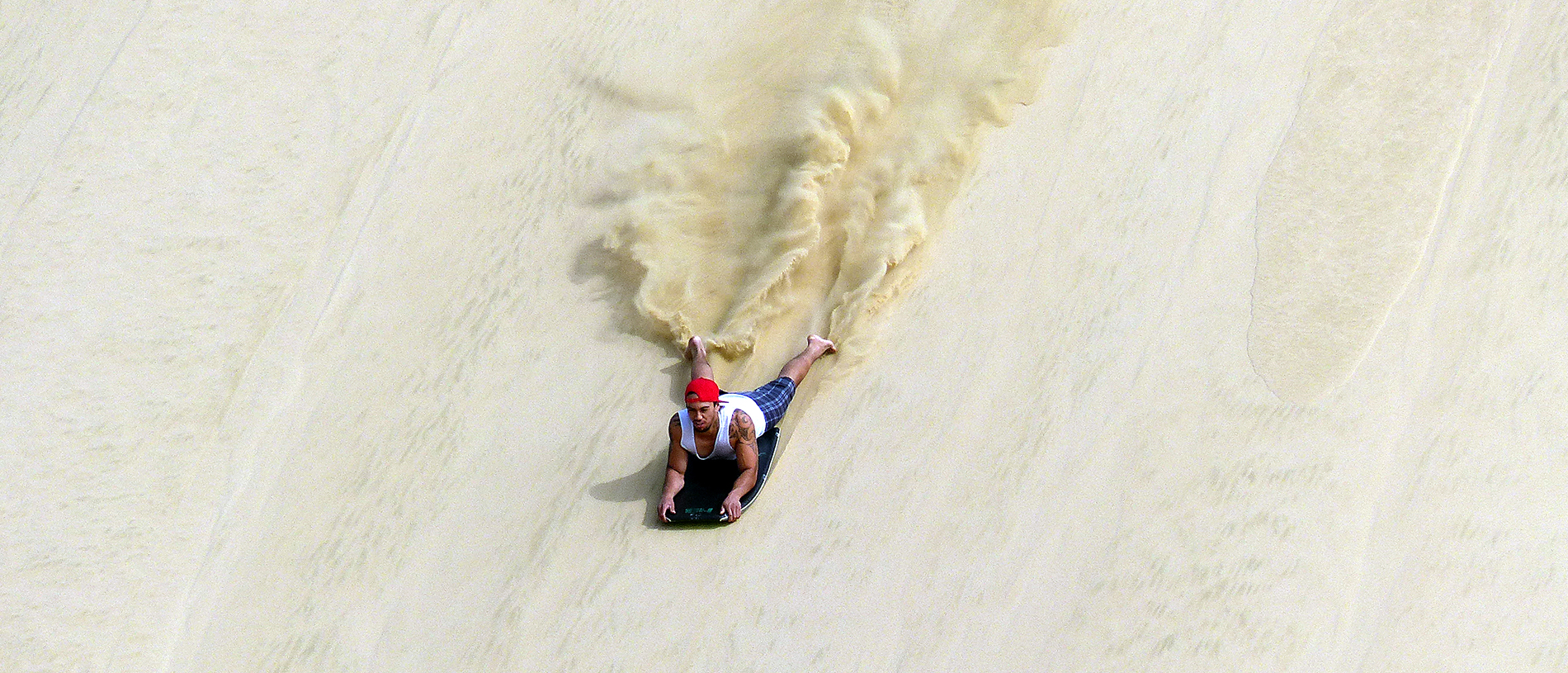
The Far North: the tail of the fish
North of the Bay of Islands, things get a little wilder. This is Muriwhenua, the tail of Māui’s legendary fish, the northernmost tip of the country.

As you approach Cape Rēinga the land narrows, affording glimpses of Northland’s east and west coasts as you climb the high, lonely road that eventually winds down to the Cape itself.
Once you’re there, there’s only ocean in front of you, the currents of the Pacific and the Tasman, which the North Island has for so long kept apart, enjoying a wild and turbulent reunion. It’s easy to see how Māori came to revere this place, for how could you stand here and not feel a twinge of yearning for the remembered homeland, across the ocean?
As you stand at the lighthouse, the land hunches its shoulders in a last hump below and to the right – Cape Rēinga itself. Clinging to the eastern side of the headland is an 800-year-old pōhutukawa, known to Māori as Te Rerenga Wairua, ‘the leaping place of spirits’. Here, according to legend, the spirits of the deceased ended the weary, landward journey back to Hawaiki, the land of the ancestors. After leaping into the green water beneath the tree, spirits would make their way northward underwater, pausing for one last, regretful look back before plunging forever into the underworld.
Even on a rare calm day, a cool breeze tickles your spine as you contemplate the final meeting of land and water, with the whisper of those two battling oceans rising to your ears.
To the west, the taut white arc of Te Werahi beach stretches to Cape Maria van Dieman, named by Abel Tasman for his patron’s daughter. To the east, beyond the closer headlands, you can see the eastern extremity of Spirits Bay and, farther yet, the Surville Cliffs, the northernmost point of the New Zealand mainland.
Approaching or leaving Cape Rēinga, you would do well to visit Te Paki Stream, where dunes of white sand of Saharan proportions rear at the northern end of Ninety Mile Beach. Careful where you stop: local legend has it that Te Paki has tracts of quicksand that can swallow an SUV whole.
Rental car companies forbid you to take their vehicles onto Ninety Mile Beach itself, but a drive along the beach – closer to 90km in length, despite the name – is one of those things every New Zealander must experience at least once, before they are called to make the journey on foot, en route to their final appointment at Te Rerenga Wairua.